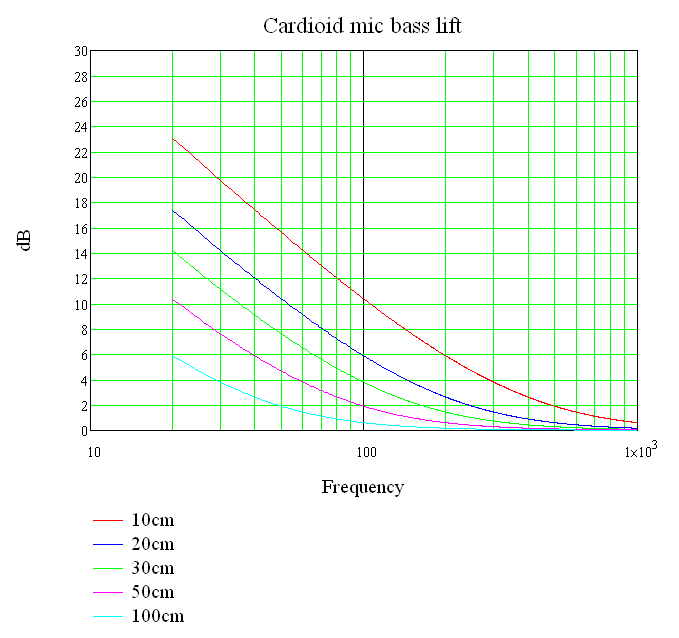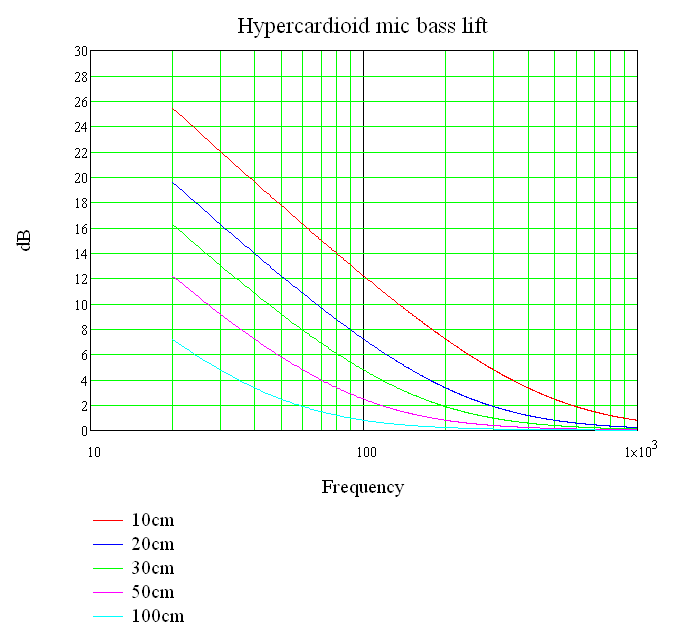
Omnidirectional microphones have capsules that are essentially barometers - they respond to the changes in atmospheric pressure that are caused by sound waves. Clearly pressure doesn't have any directional properties - it is just there in the air. If you want some directionality in the pickup pattern of a microphone, it must respond to some feature in the air that does have directional properties, and that feature is the movement of the air, or put more correctly, the velocity (which is movement in a particular direction).
A problem with this is that the velocity of an air particle doesn't follow the same simple inverse square law as the pressure when you get close to the source - or more correctly when the curvature of the sound wave front is comparable to the wavelength. This is a feature of the air, not of a microphone, so it is easy to calculate the rise in bass response for a directional microphone as you get close to a source.
What is dependent on the microphone is the ratio of pressure to velocity response- this defines the shape of the pattern, we can assume approximately
| Pattern | Pressure |
Velocity |
| Omni | 1 |
0 |
| Cardioid | 0.5 |
0.5 |
| Hypercardioid | 0.25 (app) |
0.75 (app) |
| Figure 8 | 0 |
1 |
So a figure 8 microphone like a ribbon responds only to the movement of the air and ignores changes in pressure entirely. This is what you would expect because it is totally open to the elements front and back and a change in pressure has no way of moving the ribbon. The cardioid makes equal use of pressure and velocity. The result is that from the front of the microphone, where the velocity component has the same phase as the pressure, the output is enhanced. Round the back, the pressure has no phase change (it is just pressure, so it can't), but the air is now arriving in the opposite phase, so the sum of the two is zero - there is a null facing straight backwards in a cardioid mic. The hypercardioid is somewhere between the two; it looks a little like a figure 8, but with the rear-facing lobe much smaller than the front.
So what does this mean for bass lift? For the omni there is nothing to see - there is no bass lift. But for the others we have:

Bass lift for a few distances is shown - for other distances, just interpolate the curves.


These curves can be used as a guide for eq settings. But do note that some mic manufacturers will introduce a deliberate bass droop into the capsule so that it is more or less flat at some specified close distance. This should be taken into account when using these curves, which assume a flat far-field response.
One result of the rise in bass response for the velocity component is that all directional microphones will tend towards a figure-8 low frequency response close-to, because the velocity response will be swamping the pressure response, which hasn't risen. You can hear this with a cardioid mic by speaking close to the back; the sound will be very "thuddy" with only the bass frequencies reproduced.
You can hear the effect of this here. I have used a Rode NT1-A cardioid microphone and I'm speaking very close to it - about an inch away from the grill. First you hear the response from the front; it is very bass-heavy as you would expect, but easily corrected. I then move round to the side and immediately all the bass disappears and we have clearly fallen into a null. Finally at the back of the microphone there is only bass. The cardioid parrtern of the mic is doing its job of suppressing the upper ranges, but down low where the velocity response dominates, the microphone has become a figure-8 and the response is back at full strength, just as it was round the front. The level of the 90 degree part of the recording has been lifted by 10dB to make it more readily comparable with on-axis and 180 degrees.
Listen to the near field polar response of a cardioid mic.
Here is another sample, this time speaking on axis, and moving steadily closer to the microphone. I start at about 2 feet and end up at one inch. I've tried to get quieter as I got closer so you can hear the increase in bass response.
Listen to the on-axis response with distance
Now the big test. The theory is that the cardioid response is obtained by combining an omni response (pressure) with a figure 8 response (velocity) in equal measures. If I speak from the side of the microphone I should be in the null of the velocity response pattern. What this means is that the mic should behave as a purely pressure transducer and I can approach as close as I like with no near field bass boost. And what do you know? It works.
Listen to the 90 degree response with distance
If you now listen again to the near field polar response sound clip, you can hear clearly that bass boost is entirely absent in the ninety degree section of the recording.

V is the particle velocity in cm/sec
P0 is the SPL in dynes/cm at the reference distance
r0 is the reference distance from the sound source centre
r is the actual distance from the sound source centre
rho is the density of air in gm/cc
c is the speed of sound in cm/sec
f is the frequency
The source for this material is the 1954 edition of the Radio and Television
Engineers Handbook
published by George Newnes Limited